Ranger Round Up : An Eventful First Few Weeks
Welcome to the 2023 summer season! We are the new team of assistant rangers based at Loch of the Lowes and hail from all around the UK, namely the Scottish Borders, Renfrewshire and the Peak District. We will be sharing with you our regular ‘Ranger Round Up’ blogs to give you an insight into the life of a seasonal ranger.
Our first couple of weeks have already been eventful with visits to the Tummel Shingle Islands, Brerachan and Balcroich Meadows, Keltneyburn Gorge, Dùn Coillich Community Woodland and Weem Meadow just outside Aberfeldy. Not to mention packing in a two day induction, helping to run two Beaver Watch events, participating in a tracking course and excitedly watching the recent fledging of our juvenile female osprey, ‘Blue PF4’.
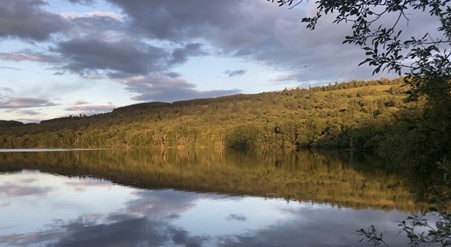
Day two into our time here and we were up early, bright eyed and bushy tailed to meet Tony Wilson (a licensed bird ringer), who has been regularly visiting the reserve with the aim of studying and ringing nuthatches. The UK’s nuthatch population has been growing rapidly since the mid 70’s, and more recently has newly expanded into the North of England and Scotland. In a time of fluctuating weather patterns and climate change, studying changes in the distribution and geographical location of bird populations is of vital importance, with nuthatch appearing to be an indicator species of current environmental changes here in the UK.
Tony allowed us to observe the ringing process, which involves attaching a small, lightweight metal ring with an identifying number to the leg of a bird, this in turn enables the monitoring of the birds’ range, movements and lifespan (should a bird be recaptured or recovered).
Tony erected several mist nets up in order to catch any birds that might be flying in the study area. The nets don’t harm the birds and upon catching them, Tony gently removed them from the net and took a variety of measurements including their weight, an estimation of their age based on plumage and kept detailed records on which species he’d found that morning.
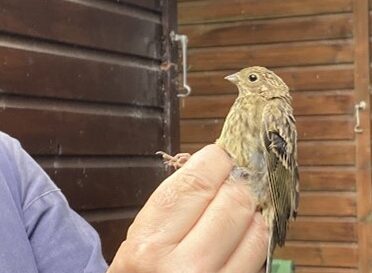
Tony worked quietly, methodically and efficiently in order to minimise the time spent taking records and the stress on the birds. Unfortunately on this occasion the nuthatches spent the morning evading Tony and he was unable to capture any of the individuals present on the reserve. However, he did successfully record a number of other species, including eight greater spotted woodpeckers (most of them juveniles), yellowhammers, including some youngsters, chaffinches, a stunning female jay and even some juvenile blue tits!
Later that week we also attended the first Beaver Watch public event of the season, which we spent observing and soaking up as much knowledge as possible to prepare ourselves for running the event in a weeks time. Luck was on our side that evening, with the early appearance of a beaver, who spent half an hour feeding among the lily pads on the loch.
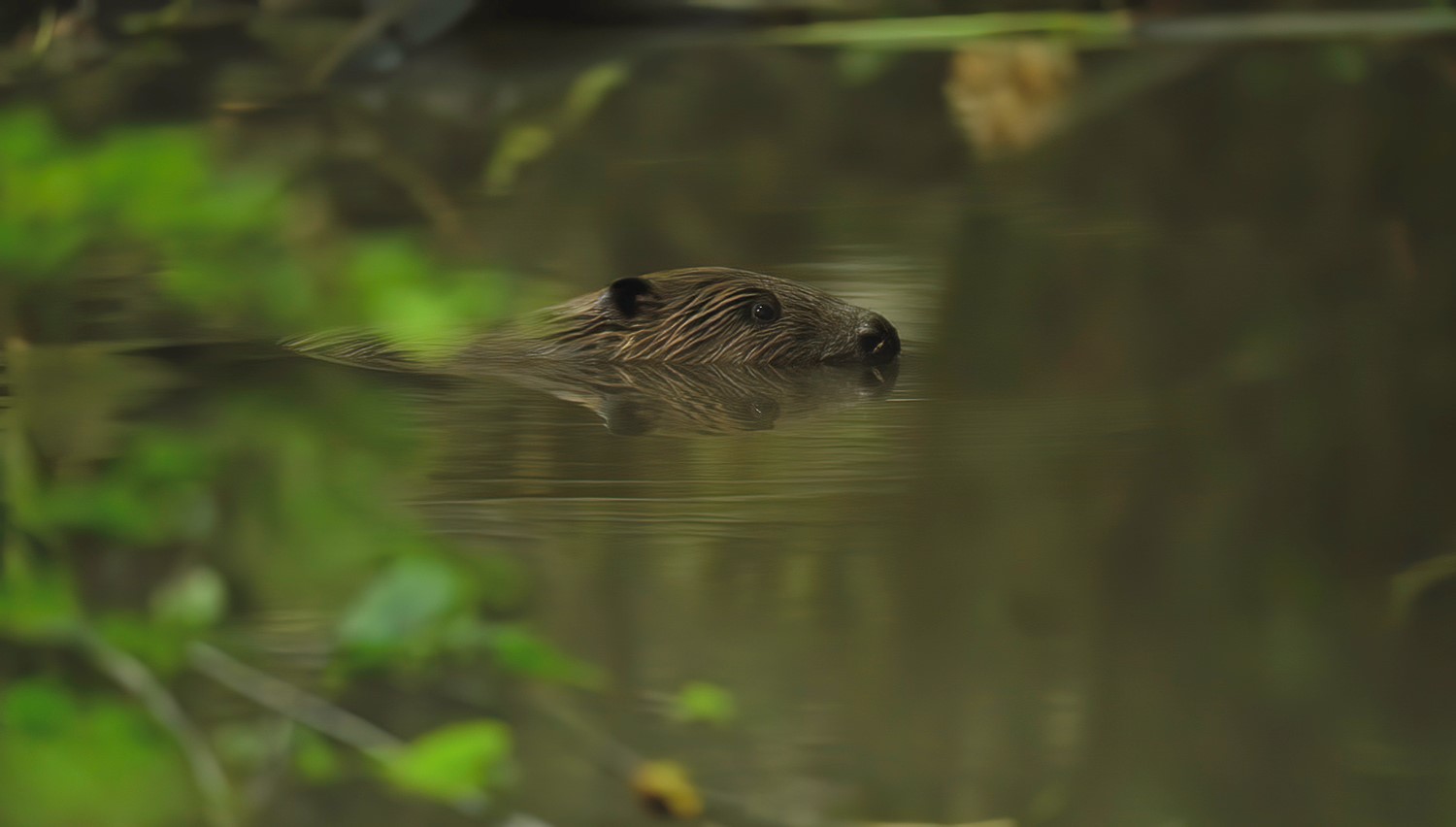
Upon finishing its evening snack, the beaver gave us an up close and personal look, swimming close to the hide on its way to the far bank. Fingers crossed we see further beautiful displays in the coming weeks when we run Beaver Watch! If you would like to come and visit Lowes for the chance to see the beavers yourself, and to learn about what makes these animals so special, their reintroduction to Scotland (and a whole lot more!), click here to book a ticket.
Our first taste of real practical work came in the form of deadheading lupin plants at Tomdachoille, one of the Trust’s Tummel Shingle Island reserves. Lupin was first introduced to the UK in 1637, originally as a garden plant, however it quickly spread into the wider environment, becoming highly invasive, choking out other native plants. Whilst the plant produces brightly coloured flowers loved by people and bumblebees alike, it also generates millions of seed pods each year which when they mature and burst can enter water courses, furthering its spread downstream. Lupin also has a deep and extensive root system, which we became very acquainted with when trying to dig it out of the rocky shingle shores. It certainly took a lot of muscle power!
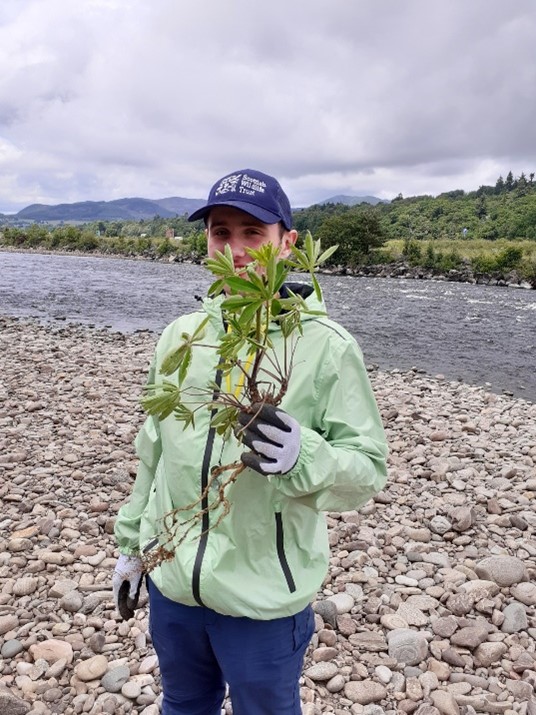
The first week flew past, and we were privileged to attend a tracking course run by visiting guest naturalist and wildlife tracker Dan Puplett. Along with members of the public, Dan took us on a guided woodland walk, demonstrating the different ways to track animals using the sign recognition of footprints, feeding signs and droppings etc.
On the way we learnt interesting facts such as why nettles are often commonly found at the beginning of footpaths near car parks – in case you are wondering, it’s due to the high incidence of dog urine, which creates the nitrogen rich conditions favoured by the plant. We also discovered that broad leaved plantain is also commonly spotted in areas of high footfall, and indeed came to be known as ‘White Man’s Footprint’, due to the movement of European explorers when they first came to the Americas – the plants literally bloomed where they walked, spread by the seeds on their shoes.
After the woodland walk, Dan talked us through his extensive collection of skulls, fur, feathers and footprint casts, to provide us with the skills to better identify and track some of Britain’s amazing wildlife.
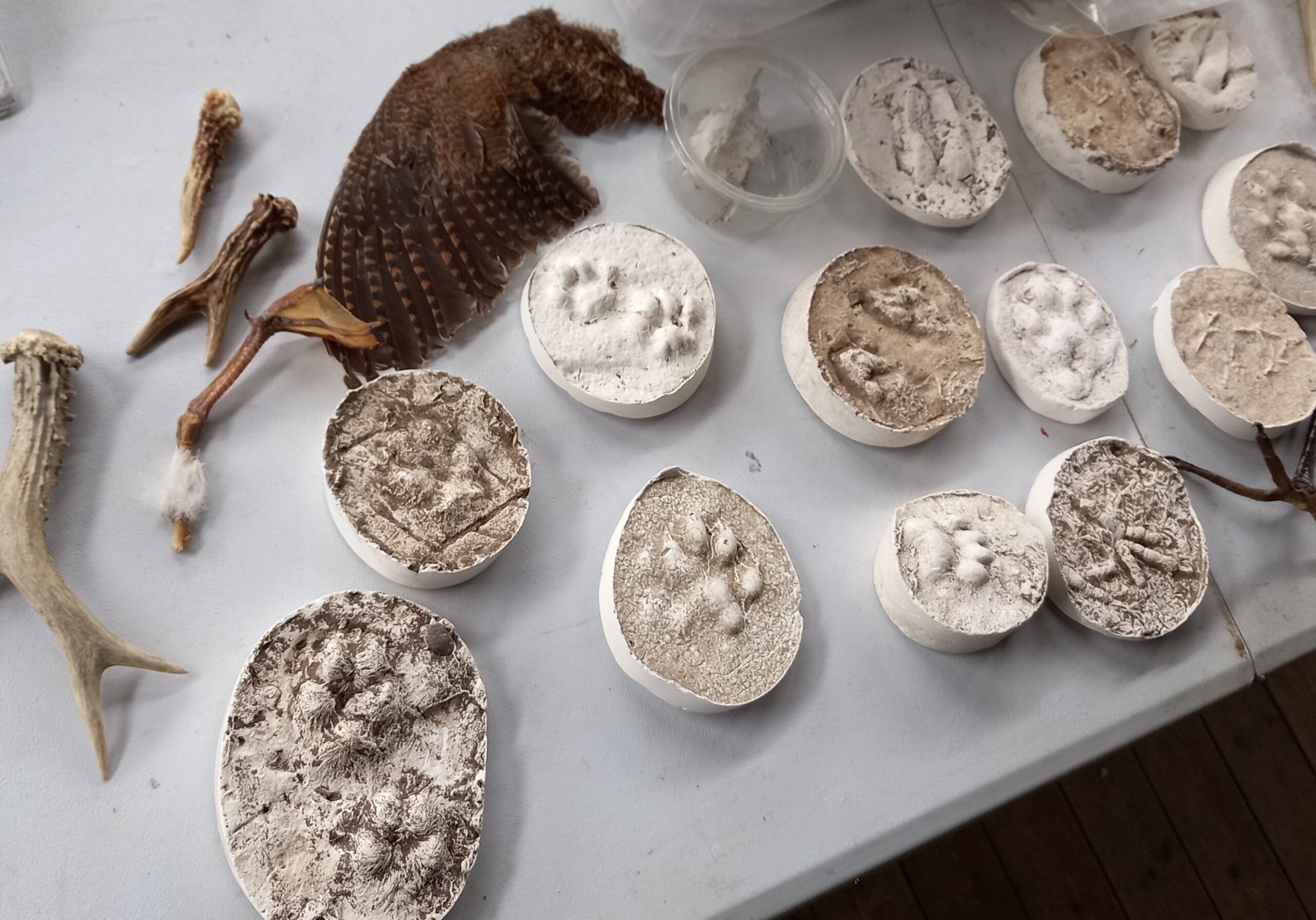
After attending the National Meadow Day at Weem, getting our first sighting of orchids at Keltneyburn and undertaking some northern brown argus butterfly egg surveying (more on that in a future blog), we rounded up our first few weeks with a day of partnership working with our Heart of Scotland colleagues at Dùn Coillich Community Woodland. There we met Assistant Project Officer Fred Wright who explained to us and a team of enthusiastic volunteers about how the land came into community ownership some 21 years ago, and has since seen a remarkable recovery in the heathland and woodland thanks to the dedicated work of trustees, trainees and volunteers.
Fueled by cups of tea and biscuits we collaborated together to dig a new footpath which will wrap around the lower section of the reserve. Despite the hard ground, tired muscles and some brief but heavy rain showers, we made great progress and had a lot of fun.
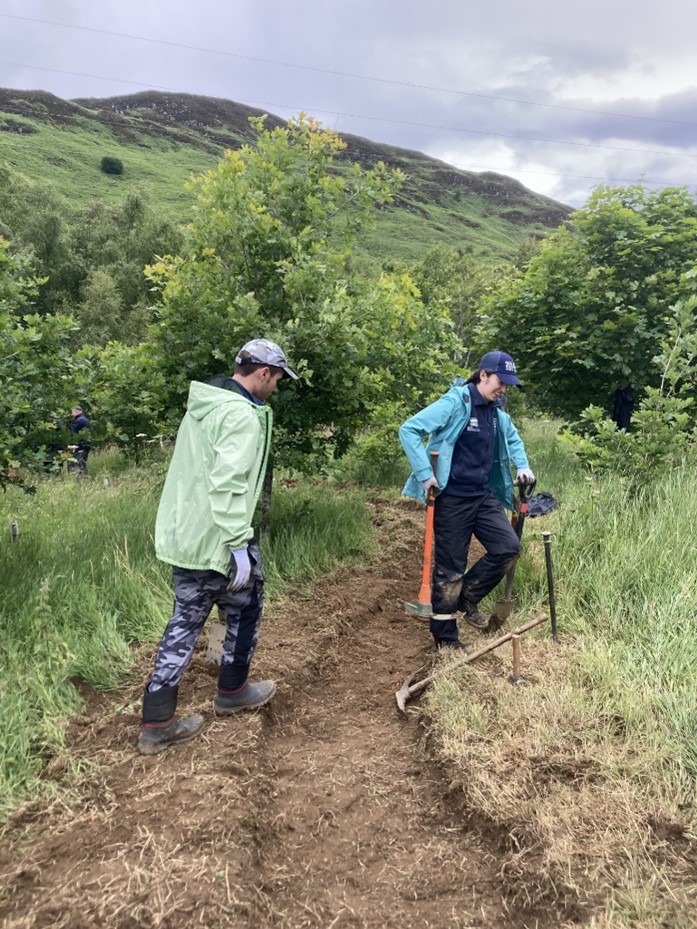
We ended the day with a fascinating sighting thanks to Tim, one of volunteers who regularly helps out at both Dùn Coillich and various Scottish Wildlife Trust reserves. We couldn’t believe it when he unfurled his hand to show us a beautiful puss moth caterpillar, the first one any of us have ever seen!
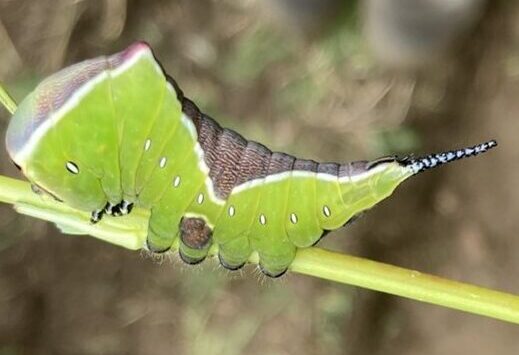
Thanks for reading, be sure to keep an eye out for our next update as we get stuck into our work this season!
Assistant Ranger Team
Help protect Scotland’s wildlife
Our work to save Scotland’s wildlife is made possible thanks to the generosity of our members and supporters.
Join today from just £3 a month to help protect the species you love.
Preface
Welcome to the 2023 summer season! We are the new team of assistant rangers based at Loch of the Lowes and hail from all around the UK, namely the Scottish …
